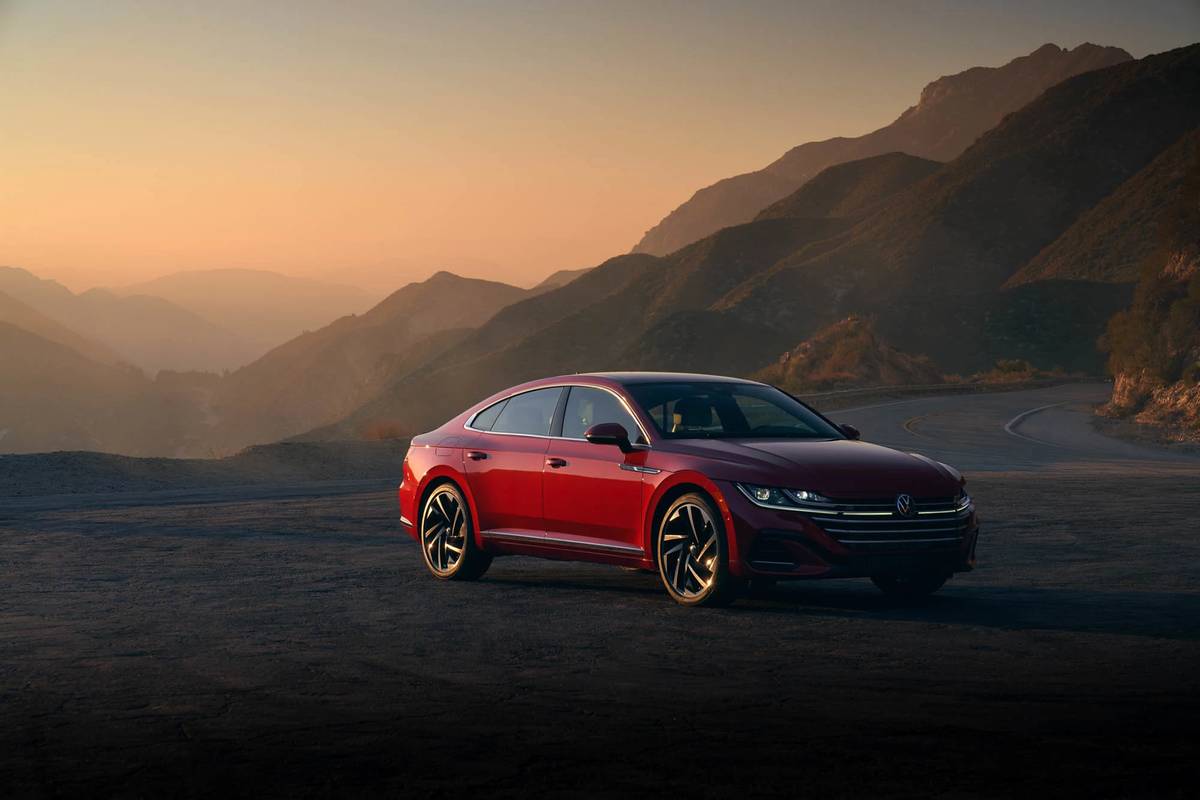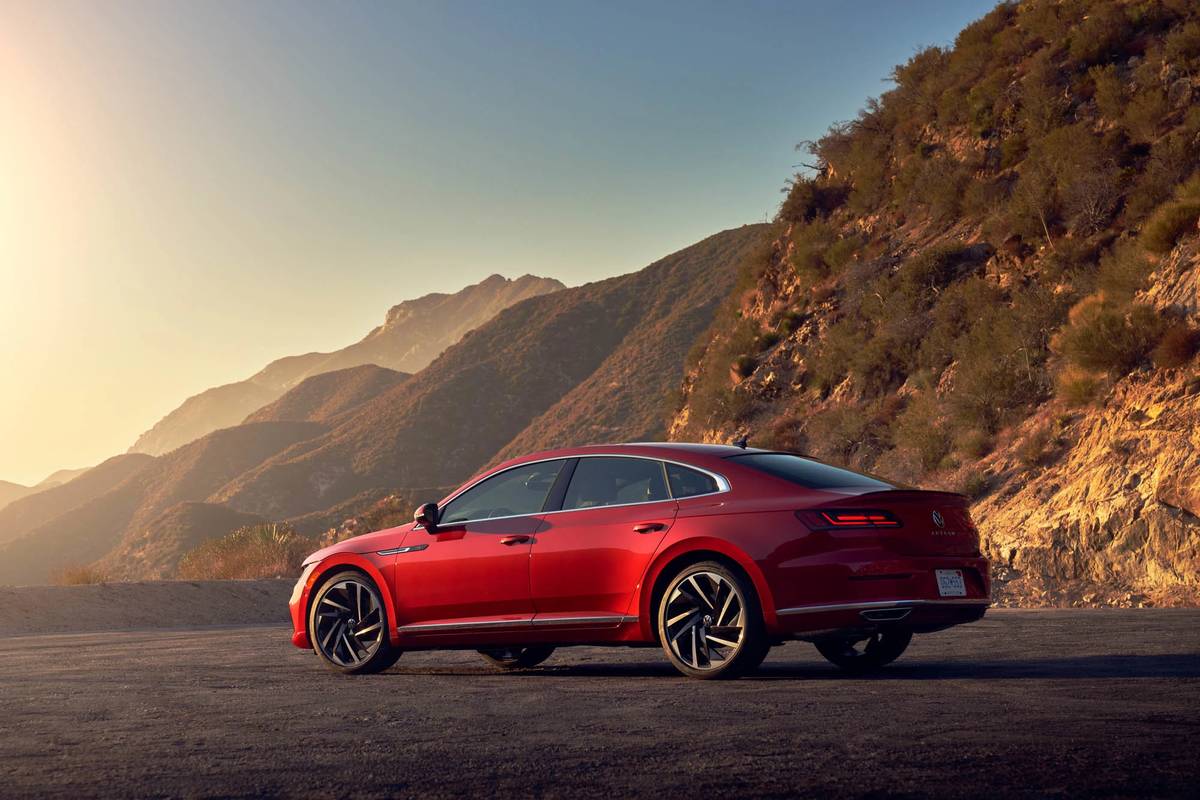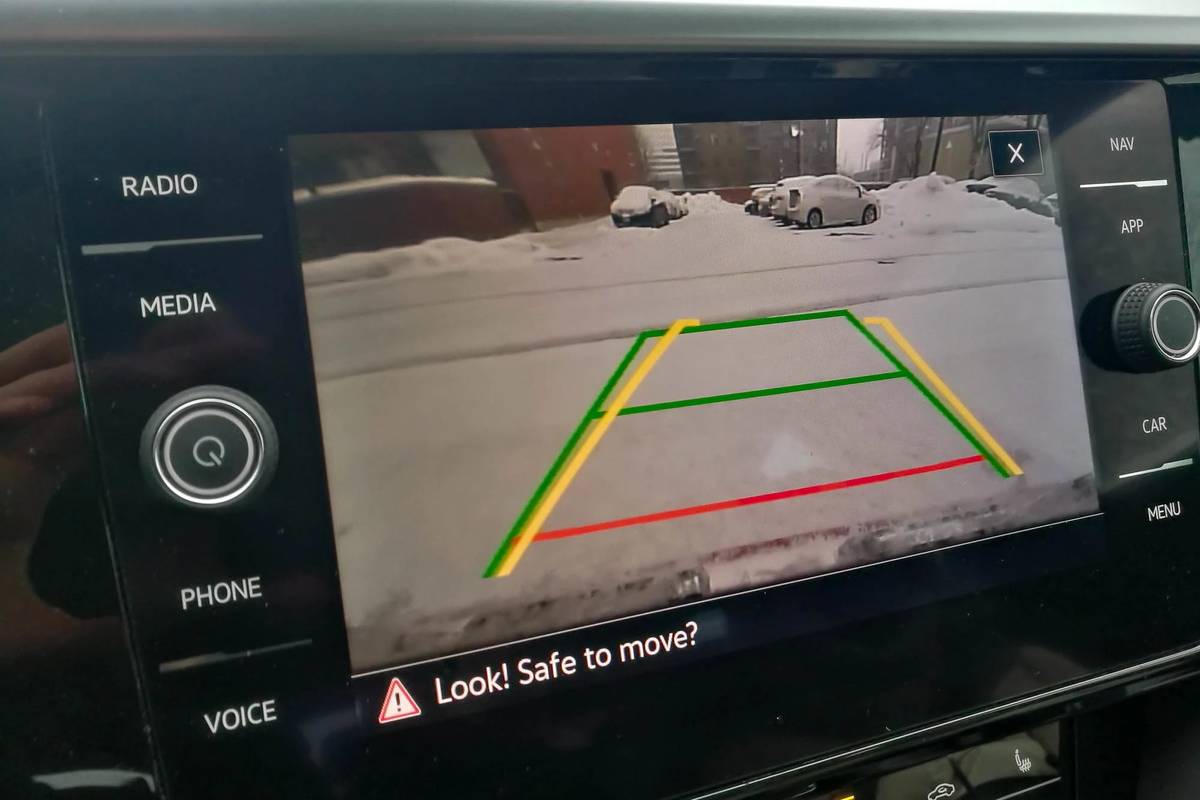
The verdict: As every SUV in the parking lot starts to look the same, the 2021 Volkswagen Arteon near-luxury mid-size hatchback stands out as a roomy, refined and refreshingly pleasant alternative for those willing to look beyond the mainstream sedan and SUV classes.
Versus the competition: Aside from its body style, the Arteon stands apart from other near-luxury mid-size vehicles with (mostly) appealing tech and loads of room — but its premium price tag can be off-putting.
The Arteon, which debuted for model-year 2019 as the spiritual successor to Volkwagen’s CC sedan, got a few changes for 2021, including light exterior styling tweaks, an updated multimedia system and more upscale cabin materials.
Related: Volkswagen 2021 Arteon Sedan With New Interior, Mild Facelift
As the only mid-size hatchback in the near-luxury class, the Arteon doesn’t have any direct competition, but Volkwagen says it’s often cross-shopped against sports sedans such as the Acura TLX, Kia Stinger and Nissan Maxima; see the models compared. The automaker also expects the Arteon to appeal to budget-minded shoppers interested in the more expensive Audi A7, from VW’s luxury brand. See them compared.
Punchy Power
Although the Arteon is in the A7’s extended family — and wears sleek and attractive curves reminiscent of its more upscale relative — it’s more of a distant cousin when it comes to road manners. The Arteon is all-around pleasant, but it never rises to exciting like the A7 and Kia Stinger do.
The Arteon’s sole powertrain is unchanged from last year: a 268-horsepower, turbocharged 2.0-liter four-cylinder engine mated to an eight-speed automatic transmission. It’s peppy and responsive from a stop, with smooth, timely shifts for power on demand. Choosing Sport mode amps up accelerator response and sharpens steering feel for a little more excitement.
I tested an SEL R-Line trim level with 4Motion all-wheel drive during two weeks of endless precipitation: rain, sleet, snow and ice. It was continuously able to find its legs, with the optional all-wheel-drive system seamlessly adjusting to the elements to provide appropriate traction. Tires always play an important role when snow is involved, and in this case our test car’s Continental ProContact TX all-season tires deserve some credit, too.
The Arteon’s standard adaptive suspension system provides good cushioning from rough roads without sacrificing handling; the hatchback zips through corners with an agile, controlled feeling that’s surprising in a vehicle this long. Overall, its confident handling and composed ride shine both on the highway and around town.
With front-wheel drive, the Arteon is EPA-rated 22/32/25 mpg city/highway/combined with premium gas; AWD drops that estimate to 20/31/24 mpg. That’s in line with competitors — which also prefer premium fuel — such as the front-drive Acura TLX (25 mpg combined) and the base rear-wheel-drive Kia Stinger (25 mpg combined). The V-6-only front-drive Nissan Maxima slightly trails them all, with a combined rating of 24 mpg.
An Unexpected Family Car
In the garages of families I know, a sedan is about as common as a luxury yacht. (Maybe I have the wrong kinds of friends … ) Nearly all the families I know drive an SUV or minivan, including myself; my own car is a minivan, which easily accommodates my family of five. Sedans and hatchbacks were not on my shopping list.
To gauge real-life livability, however, I try to shoehorn my family into everything I test, and, to my surprise, the Arteon can family very well. The backseat is wide and flat, with ample headroom and legroom for two adults to coexist comfortably — or in my case, three kids. Not an easy feat. With my twins’ big boosters in the outside seats and my 10-year-old on a smaller, backless booster in the middle, we fit with no complaining (perhaps an even more difficult feat).
For caregivers with kids in child-safety seats, the Arteon’s exposed Latch anchors make connection struggle-free, and its three top tether anchors were easy to find and use. Check out our Car Seat Check.
Yes, we would’ve had more wiggle room in a minivan or mid-size SUV, but we fit fine in the Arteon — even on a long drive. What’s more, the hatchback carried much more stuff than I expected. When we went sledding, the Arteon’s cargo area swallowed all our gear — large sleds, snacks, mittens, more mittens and bags of extra mittens — with room to spare.
The cargo area is very deep and has a nice wide opening for accommodating bulky items. Also, its hatchback setup gives the cargo area more height than a traditional trunk, so it can hold taller items. The backseat folds in a 60/40 split, and there’s a small center passthrough that’s handy for simultaneously carrying people and long, skinny items.
Manufacturer-provided cargo numbers back up my experience. The Arteon’s hatchback-style cargo area offers 27.2 cubic feet of space with all its seats in place — more than the Volkswagen Tiguan compact SUV, though that car seats seven.
Utility aside, the Arteon is also a nice place to be. Updates for 2021 give the cabin a premium vibe, with a handsome design in my test vehicle highlighted by attractive two-tone Nappa leather-trimmed seats, as well as brushed metal and glossy black trim. There’s also a new ambient lighting system with 30 selectable colors, which reveal themselves through translucent panels in the doors and console — kinda cool. The changes give it a more upscale feel overall than you’ll find in other VW cars, like the Passat or Jetta.
Controls
VW’s new MIB3 multimedia system joins the Arteon cabin, and there’s a lot to like about it — but not all of it.
First, the system’s standard 8-inch touchscreen is nestled into the dash within easy reach of the driver’s seat. The screen is responsive, and the system’s menus are straightforward. Wireless Apple CarPlay and Android Auto are now standard, and the integration is seamless. I also found that the system’s voice commands work accurately for navigation and audio functions.
The standard digital cockpit instrument panel was also helpful. Its 10-inch display offers a configurable presentation of vehicle information, including car status, navigation, driving data, phone information and driver assistance features. Having the full-screen navigation view right in front of my eyeballs was especially useful.
That said, a few things need work. While I appreciated the system’s large, traditional volume knob, its tuning knob is odd. It works for some functions, like changing regular radio stations, but does not work for satellite stations.
Also, some editors were disappointed by VW’s switch to touch-sensitive panels on the steering wheel and for climate control, versus traditional buttons and knobs. I mostly didn’t find these problematic to use, but I did struggle with one feature: a slider function for fan speed and temperature. I found it awkward and difficult to use with accuracy, especially compared with pressing a button or turning a dial. There is a workaround, however: To adjust most climate settings, once you’ve touched the button on the climate panel you can use either the touchscreen or the panel to make the adjustment.
Safety and Value
The Arteon is well equipped with standard safety features: Forward collision warning with automatic emergency braking, blind spot warning and rear cross-traffic alert are included on all trims. Available active safety features include lane keep assist, adaptive cruise control with stop-and-go capability and automatic high-beam headlights.
My favorite Arteon safety feature is among the more low-tech ones: its backup camera. Because the lens is protected under the VW badge and pops out only when the transmission is in Reverse, the camera’s view was consistently clear and free from the snow, ice, salt, etc. that otherwise plagued my time with the car. After driving through more than one blizzard in the Arteon — and in other vehicles — I appreciated this small convenience feature, especially given the Arteon’s sloping roofline and small side windows, which hurt rear visibility.
Most trims of the Arteon got a little more expensive for 2021, but its base price of $38,190 is still within range of its competitors; it’s about the same price as the Nissan Maxima and a little less than the Acura TLX. It costs quite a bit more than the Kia Stinger, however, which starts at $34,135 (all prices include destination). Also, prices escalate quickly, with the top trim approaching $50,000.
The Arteon is classy in a class of its own, and offers shoppers an exclusive mix of luxury and utility — minus the seemingly inescapable, everyone-has-one SUV body style.
We cannot generate a video preview.
Cars.com’s Editorial department is your source for automotive news and reviews. In line with Cars.com’s long-standing ethics policy, editors and reviewers don’t accept gifts or free trips from automakers. The Editorial department is independent of Cars.com’s advertising, sales and sponsored content departments.






























































